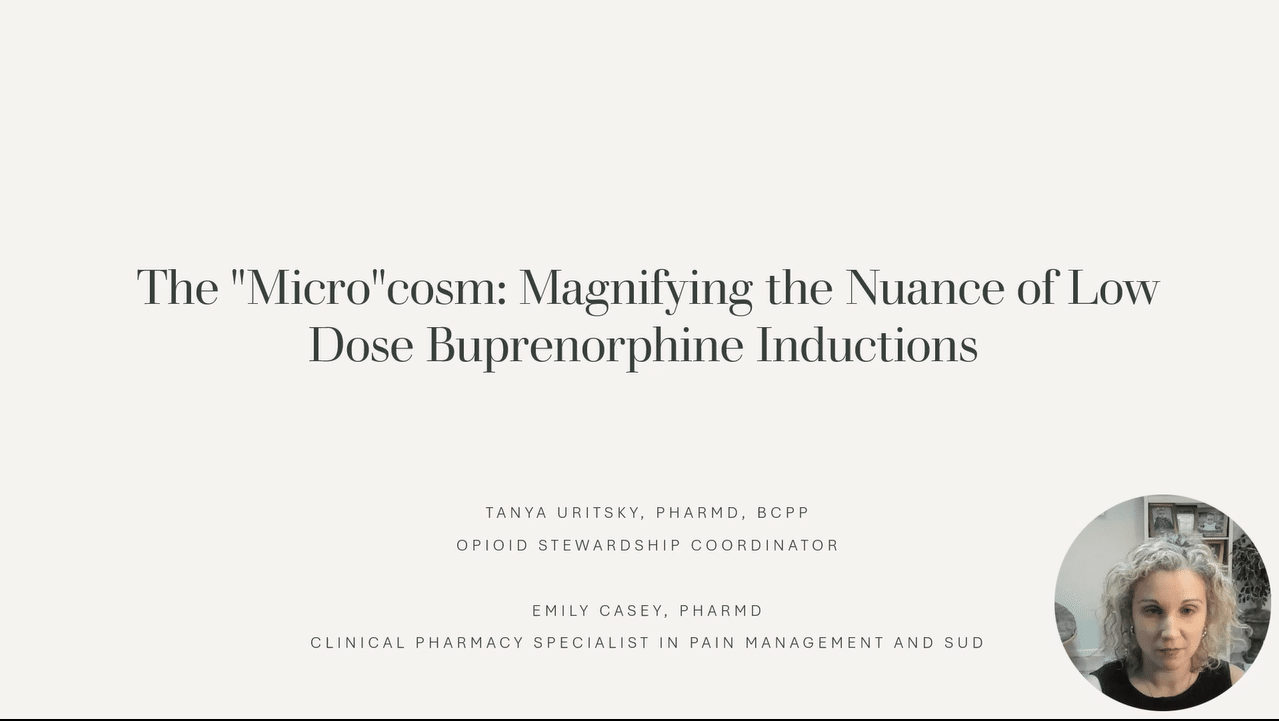This content is restricted to site members. If you are an existing user, please log in. New users may register below.
Login
Register Now to Watch


This content is restricted to site members. If you are an existing user, please log in. New users may register below.
Login
Register Now to Watch
The following questions and topics will be covered in this presentation.
The “Micro”cosm: Magnifying the Nuance of Low Dose Buprenorphine Inductions : Casey/Uritsky
1) What are the physiologic challenges when transitioning from high potency full mu agonists to buprenorphine?
(Select all that apply)
a) Risk of opioid withdrawal
b) Opioid tolerance
c) Protracted clearance of fentanyl
2) What are the pharmacologic challenges when transitioning from high potency full mu agonists to buprenorphine? (Select all that apply)
(Select all that apply)
a) Lipophilicity of fentanyl
b) Ceiling effect of buprenorphine
c) Partial agonism of buprenorphine at the mu receptor can result in precipitated withdrawal
d) High affinity of buprenorphine for opioid receptors
3) What role does mu receptor saturation play in this transition?
a) Understanding mu receptor saturation relative to buprenorphine dose helps guide full agonist tapers
b) Mu receptor saturation does not impact transition from high potency opioids to buprenorphine
c) Understanding mu receptor saturation relative to buprenorphine helps guide dosing of full agonist for pain management
d) At 16mg, buprenorphine only occupies 20% of mu receptors and therefore does not impact pain management or transition from high potency full mu agonists.
4) What non-opioid adjuvant medications are useful during a transition from methadone to buprenorphine?
(Select all that apply)
a) Clonidine
b) Hydroxyzine
c) Dicyclomine
d) Ondansetron
5) Which buprenorphine induction strategy can be utilized when transitioning from methadone?
a) Macro Induction
b) Low Dose Induction
c) Traditional Induction

